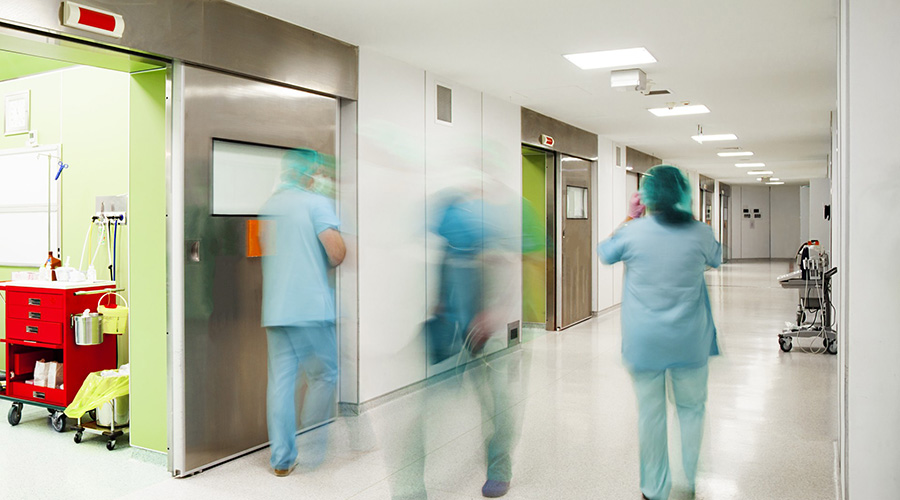For years we have known and experienced the negative impacts of delayed and inaccurate information transfer. The reasons could be many- lack of continuity, fragmented systems, different data standards- owing to which the news of a patient’s medical encounter may take some time to reach the provider, if it ever does. Stepping up, the international standards development organization, Health Level 7 (HL7) came up with ADT - Admit, Discharge and Transfer feeds to establish patient data notification services.
ADT messages are lately becoming the cornerstone in care management as the go-to source of data, holding a wealth of valuable information that can affect point-of-care decisions. Seemingly simple, ADT messages are invaluable tools in helping providers better coordinate care and solving the issue of national interoperability.
What type of data do ADT feeds capture?
ADT feeds capture important elements pertaining to a patient’s demographic and clinical information, right from their name and address to their medical record number. The messages usually communicate:
• A patient’s demographics- name, insurance, address, medical record number, etc.
• If a patient’s ‘status’- admitted, discharged, or transferred- has been updated.
Some of the most important segments in an ADT message are PID (patient identification) segment, PV1 (patient visit) segment and an additional IN1 (insurance) segment. There are 51 different types of ADT messages, reflecting different events like admit, discharge, transfer, registration, etc. and can be augmented with additional data to streamline and manage process within a health system and helping providers be prepared and deliver effective care.
For example, the insurance information present in the ADT messages can let providers gain valuable information like referrals, details of billing, where to send medication orders, validating prescriptions.
Making ADT feeds instrumental in care management
In the age of technological evolution, providers and patients alike have begun relying on electronic mediums of communication, making ADT feeds a focal point in improving clinical outcomes. ADT feeds hold valuable information that can integrate departments, provide accessibility of information and store large volumes of data in a secured, organized manner. Apart from the above, ADT feeds can be used for:
• Enhanced care management: As ADT messages contain structured information about a patient’s health, they allow care teams to monitor patients’ health and connect with them proactively.
• Real-time notification services: Leveraging ADT messages at the point of care, combined with machine learning can help providers and health coaches be notified about care encounters like hospitalizations, ED visits and follow up with discharge instructions.
• Analysis of care quality: ADT messages can be extracted out of their databases for various time periods and attributes and can be processed through scripting logic and analyzed to generate consolidated reports about different parameters like inpatient encounters, 72-hour ED visit, 30-day readmissions etc.
Existing ADT exchange infrastructures
ADT messages tend to be high-volume, and there has to be a special focus on avoiding duplicate message routing, miscommunication of information and on managing inter-facility variations. Here are some existing models:
• Point to point model: the point-to-point model, or P2P model, is the most simplified and basic approach with the underlying architecture relying on two systems establishing VPN connectivity between themselves to send and receive ADT messages. The biggest advantage of the model is its technical simplicity with rapid implementation.
• Hub model: The hub model introduces a lightweight engine to improve the processing and routing of ADT messages and addresses the scalability issues with the P2P model. It follows a simple ‘if-else’ routing; for example, ‘If the state code of incoming message doesn’t equal my local state code, send the message back to the routing hub.’
• MPI query model: The MPI (Master Patient Index) query model has a targeted method of routing ADT messages based on patient identity. Instead of using geographic routing, MPI query model first evaluates if a patient exists within another HIN infrastructure and if yes, the message is routed further.
• SHIEC patient-centered data home: The Strategic Health Information Exchange Collaborative rolled out this approach that combines the technicalities of all these models to facilitate inter-HIE data exchange. Similar to P2P and hub models, ADT messages are pushed to the destination system, and a unique patient identifier is associated with the subject patient record and included in the ADT messages.
The road ahead
From health systems to accountable care organization to integrated delivery networks, we see today that providers can gain a holistic perspective on their patients with valuable and actionable real-time information i.e. with ADT messages. More than admit, discharge and transfer notifications and accurate data exchange, ADT feeds have the potential to have all the members of a health system working in cohesion. True, there is a certain fatigue and skepticism associated with ADT as is the case with any other new data sharing initiative, but if ADTs are implemented at full-scale, we can have reduced readmissions, better outcomes for high-risk populations, improved patient experience of care, and perhaps a viable solution to achieve 100% interoperability.
Abhinav Shashank s CEO of Innovaccer, a Silicon -Valley based healthcare data analytics company.

 Making the Energy Efficiency Case to the C-Suite
Making the Energy Efficiency Case to the C-Suite How to Avoid HAIs This Flu Season
How to Avoid HAIs This Flu Season Design Phase Set to Begin for Hospital Annex at SUNY Upstate Medical
Design Phase Set to Begin for Hospital Annex at SUNY Upstate Medical Building Hospital Resilience in an Era of Extreme Weather
Building Hospital Resilience in an Era of Extreme Weather Ennoble Care Falls Victim to Data Breach
Ennoble Care Falls Victim to Data Breach